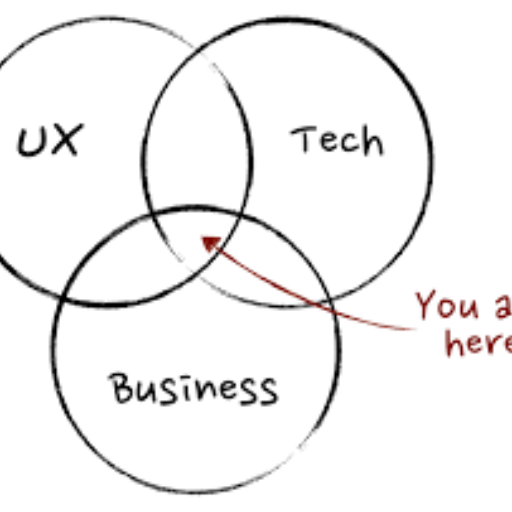Product Manager-AI-powered product management tool
AI-powered tool for smarter product decisions
Help me answer this interview question
Organize an effective user research
Assist me in prioritizing the backlog
How do I gain support from stakeholders
Related Tools
Load More
AI Product Manager
Helps you be a better PM. Made by the team behind kraftful.com

Product Manager
Help product managers with the first steps of a new product development

Product Management Interview Expert
GPT built for PM interviews, covering Analytical, Product Sense, Estimation and Technical questions. GPT will provide you answers to most asked PM interview questions. Curated by Product Manager - Sri Laxmi.

Product Manager Bot
Product Manager GPT. Discover expert insights on effective product management. Learn about roadmaps, prioritization, feature development, metrics, and level up as a PM

产品经理 Product Manager
辅助产品经理完成产品需求文档设计工作,Product Requirement Document Writing

Product Manager Expert
An expert in Product Management to help PMs navigate their day to day working tasks
20.0 / 5 (200 votes)
Comprehensive Overview of Product Manager Role
A Product Manager (PM) is responsible for overseeing the entire lifecycle of a product, from ideation through to market delivery, ensuring that user needs, business objectives, and technological feasibility are all balanced. The key function of a PM is to serve as the nexus point between different teams—engineering, design, marketing, and sales—aligning their efforts towards building a product that meets user needs and drives business value. A PM has to deeply understand user problems and turn them into clear product requirements while also working closely with developers to ensure the product can be built efficiently and within the set timelines. PMs also analyze data to measure product performance and make strategic decisions. For example, if a mobile app’s user retention is low, the PM might lead an initiative to introduce new features to improve engagement. Scenario: Suppose an e-commerce company wants to launch a new mobile shopping feature. The PM would conduct user research to understand the needs of customers, then collaborate with engineers to define technical requirements. Simultaneously, the PM would work with the design team to create user-friendly interfaces and collaborate with marketing for a go-to-market plan. Post-launch, the PM would gather usage metrics to refine the feature based on customer feedback.

Core Functions of a Product Manager
User Research and Needs Identification
Example
A PM at a software company conducts interviews with target users to understand pain points they experience while using the software.
Scenario
In a SaaS company building project management tools, the PM might discover through research that users want easier file sharing features. Based on this, they could prioritize integrating cloud-based storage solutions into the product roadmap.
Product Roadmapping and Prioritization
Example
A PM uses a prioritization framework like RICE (Reach, Impact, Confidence, Effort) to decide which features should be developed first.
Scenario
For a fitness app, a PM identifies several potential features, like community forums, workout tracking, and social media sharing. After evaluating impact and effort, the PM prioritizes workout tracking first because it directly enhances the core user experience and retention.
Cross-functional Team Leadership and Communication
Example
A PM leads a sprint planning meeting where they ensure that the development team understands the requirements of the next feature release.
Scenario
In a startup building a B2B analytics platform, the PM needs to ensure smooth collaboration between backend developers, UI/UX designers, and marketing. They facilitate alignment meetings, define sprint goals, and address any blockers between the teams to ensure a smooth feature rollout.
Target Audience for Product Management Services
Startups and Entrepreneurs
For startups or new ventures, product management is crucial in ensuring that limited resources are used efficiently. These users benefit from setting a clear product strategy, understanding the market need, and building a product that aligns with business goals. Entrepreneurs often use product management to validate ideas before making significant investments.
Mid-sized Businesses and Scaling Teams
As companies scale, product complexity increases. Mid-sized businesses benefit from strong product management practices to align multiple departments and ensure product development efforts stay on track. PMs here focus on scaling successful products, managing a growing roadmap, and navigating more complex stakeholder requirements.

How to Use Product Manager
1
Visit aichatonline.org for a free trial without login, no need for ChatGPT Plus.
2
Identify your specific use case, whether it's project planning, prioritization, stakeholder management, or decision support.
3
Input your key product-related data such as user feedback, market research, and business goals for targeted insights.
4
Leverage the tool’s AI-powered analytics to generate actionable strategies, reports, or prioritization frameworks tailored to your product.
5
Iteratively refine your decisions by using the tool to compare various approaches, track KPIs, and adjust based on feedback.
Try other advanced and practical GPTs
Image to Excel GPT (XLSX from Photo GPT)
AI-Powered Image to Excel Conversion

BLUEPIC - Graphic Designer
AI-powered custom graphic creation

Shortcuts -Thousands of Shortcuts for Productivity
Accelerate Your Workflow with AI Shortcuts

Astrology Birth Chart Analyst
AI-Powered Astrological Insights

Chemical Process Control Tutor
AI-powered guidance for mastering process control.

AI Detector
Detect AI-generated text with precision.

ID My Pill
AI-powered pill identification made simple.

OAuth Expert
AI-powered OAuth implementation expert

Classical Music Analysis
AI-Powered Classical Music Analysis

Språkprofil Oslo kommune (uoffisiell)
AI-powered clarity for Norwegian texts

Game Master
AI-powered interactive learning and fun

Underwater Robot (ROV)
Build custom ROVs with AI guidance

- Strategy
- Feedback
- Roadmapping
- Prioritization
- Metrics
Product Manager Q&A
How does Product Manager assist with prioritization?
Product Manager uses AI to help evaluate features or tasks through frameworks like RICE, offering data-driven recommendations based on impact, cost, and user feedback.
What types of data inputs work best with Product Manager?
Common inputs include user feedback, market research, business goals, competitive analysis, and key product metrics. The more specific and structured the data, the better the recommendations.
Can Product Manager help with stakeholder alignment?
Yes, it provides tools to synthesize diverse viewpoints, assess impact, and present clear, data-backed priorities, making stakeholder communication more effective.
Does Product Manager integrate with Agile or Lean methodologies?
Yes, it supports Agile and Lean workflows by offering tools to manage backlogs, sprints, and iterative feedback loops, enabling fast decision-making and continuous improvement.
Is Product Manager suitable for early-stage startups?
Absolutely. Startups can benefit from Product Manager by using it to focus on the most impactful features, validate assumptions with data, and align with business objectives quickly.